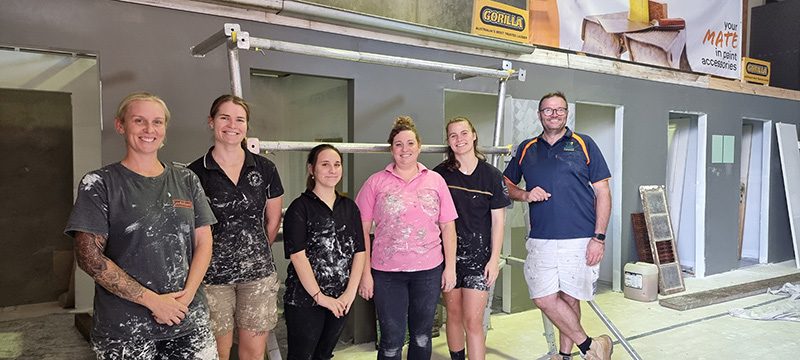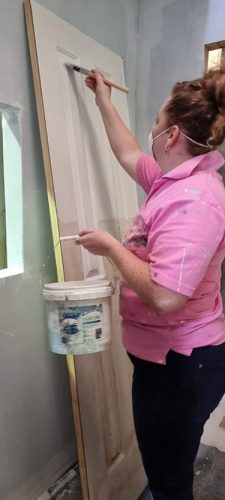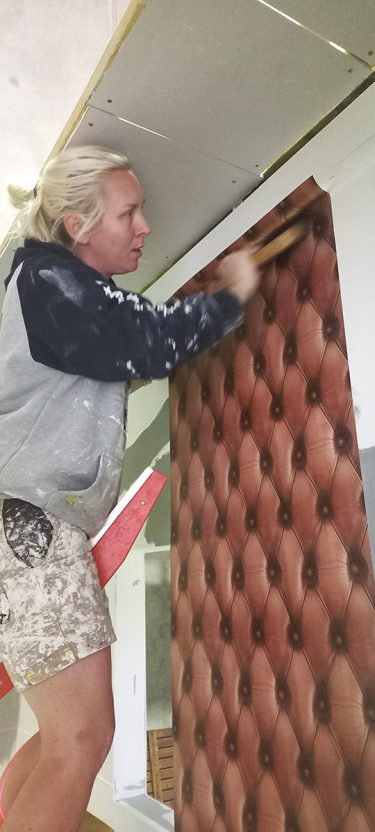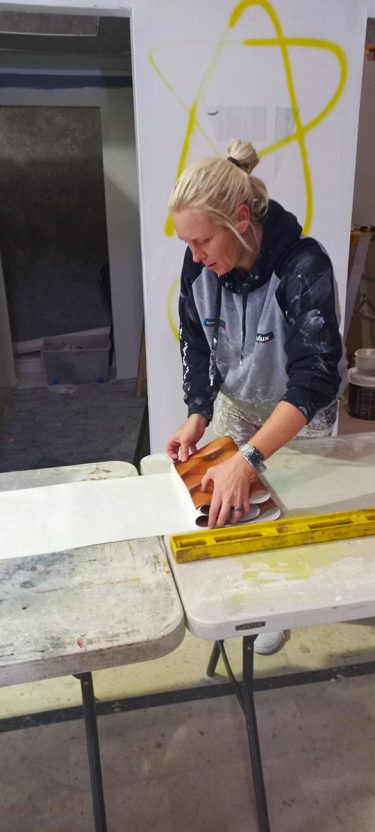

As a 3rd year apprentice wage in Australia, you can expect to earn a salary of $33,000 per year. This is just an average estimate, and your actual earnings will depend on factors such as your experience, skillset, and location. In addition to your salary, you may also receive other benefits such as paid leave and bonuses.
It is important to remember that wages for 3rd year apprentices can vary greatly depending on the industry and employer. For example, a 3rd year apprentice painter in one state may earn significantly more than another 3rd year apprentice painter in another state. Additionally, different employers within the same state may offer varying salary packages.


It is also worth noting that wages for 3rd year apprentices may increase over time. As you gain more experience and skills, your wage can reflect this. To truly maximize your earnings potential as a 3rd year apprentice painter in Australia, it is important to keep up with industry trends and build relationships within the industry. This will give you an edge when seeking employment or a promotion.
Overall, if you are considering becoming a 3rd year apprentice painter in Australia, you can expect to earn an average salary of $33,000 per year. However, there is potential for earning more depending on the industry, employer and your own experience and skillset. It is important to stay up to date with industry trends and network within the field for increased earning potential.
The wage for a 3rd year painting apprentice in Australia is determined by the relevant industrial agreement or award, depending on the state or territory. Generally, as of 2020, a 3rd year painting apprentice in Australia can expect to earn around $20 per hour. This rate may vary from state to state and also according to the type of work being performed. In some cases, a higher rate of pay may be negotiated with the employer for more complex jobs or for those requiring special skills. It is important to note that in addition to the base wage, apprentices are also entitled to other benefits and entitlements such as superannuation contributions, leave loading and penalty rates.


The 3rd Year Apprentice Wage for paint by brush is an important consideration when it comes to starting a career as a painter. This wage rate helps determine the level of compensation that apprentices can expect and provides a baseline for their earnings. The specific amount of money paid will depend on the region and the type of contract that is drawn up between the apprentice and their employer. Generally speaking, the wage for a 3rd-year apprentice paint by brush is higher than that of a first- or second-year apprentice. This reflects the increased level of skill and experience expected from an individual who has been through two years of training.
When establishing a contract between an employer and an apprentice, the wage rate should be discussed and agreed upon in advance. This ensures that both parties are clear on the terms of their agreement before work begins. Additionally, it is important to keep in mind that wages may change over time due to market conditions and other variables. Therefore, apprentices should take the time to review their contract regularly to ensure that they are receiving their fair share of the wages.
Female mature age apprentices are eligible for a 3rd-year apprentice wage, which is set by the Fair Work Commission in Australia. This wage is determined based on the duties that an apprentice performs, their skill level and a range of other factors. It is important to note that the Fair Work Commission periodically reviews and adjusts wages accordingly, so it’s important to stay up to date with the current wage requirements. The 3rd-year apprentice wage can also be affected by any awards or agreements in place between the employer and employee, and this should be taken into consideration when negotiating an apprenticeship wage. Additionally, there are extra entitlements that come with a 3rd year of apprenticeship, such as superannuation and paid leave. It is important to discuss these entitlements with the employer prior to entering into an apprenticeship agreement. Female mature age apprentices should also be aware of their rights under Australian law, including but not limited to equal pay for equal work, protection against discrimination and the right to unionize.
Overall, it is important to understand the 3rd-year apprentice wage, and to ensure that all necessary entitlements are taken into consideration when negotiating an apprenticeship agreement. This will help ensure a fair and equitable outcome for both parties.
For more information on the Fair Work Commission’s guidelines regarding the 3rd year apprentice wage, please visit their website.




The average 3rd year apprentice wage for sanding a panel door is typically around $14.00 per hour. This rate may vary depending on the location of the job, as wages can be higher in more expensive cities. Generally, 3rd year apprentices can expect to make slightly more than 2nd year apprentices when it comes to sanding a panel door.
Since apprentices are still learning the trade, it is important to remember that they may not have the same level of expertise as a fully trained professional. Nevertheless, 3rd year apprentices should be confident in their abilities, and willing to take on more challenging projects with proper guidance from a supervisor or mentor. With experience comes increased efficiency, allowing the apprentice to complete projects faster while maintaining quality standards. This increased proficiency can lead to higher wages over time.
Overall, sanding a panel door as a 3rd year apprentice is an excellent way to make money and gain valuable experience in the industry. With dedication and hard work, one can expect to make a competitive wage for their efforts. With the right attitude and a dedication to learning, even 3rd year apprentices can make a successful career in carpentry.
The average 3rd year apprentice wage for roof wallpapering is typically within the range of $15.00-$20.00 per hour, depending on experience and qualifications. Many apprentices may also receive additional compensation such as company-provided tools, health insurance benefits, vacation pay, and other incentives from their employer. The wages for this type of work may also be higher in bigger cities or areas with a greater demand for roof wallpapering services. In addition to their usual duties, apprentices must also attend mandatory training courses in order to improve their skills and stay up-to-date on the latest techniques and regulations. These advanced courses will often result in an increase in pay as the apprentice becomes more experienced. Apprentices can also work towards a nationally recognized certification, which will increase their pay rate and job prospects. Aspiring 3rd year apprentices should research the various requirements and wages in their area before entering into an agreement with an employer. This will ensure they are adequately compensated for their hard work while gaining valuable experience.


Apprenticeship training is a form of on the job training in which people learn skills from experienced professionals. Apprenticeships combine hands-on learning with classroom instruction, allowing apprentices to gain professional experience while developing their skills and knowledge. A painting apprenticeship typically lasts between three and four years.
A mature aged apprenticeship is a type of training program that allows adults over the age of 21 to receive job-specific skills and qualifications in an industry of their choosing. The apprenticeship focuses on providing adult learners with the knowledge and experience necessary for them to become successful in their chosen field. It also provides mature aged workers with the opportunity to increase their earning potential and career prospects.
An adult apprenticeship is a form of vocational training that allows adults over the age of 25 to receive job-specific skills and qualifications in an industry of their choice. Apprenticeships are typically offered by businesses, government agencies or educational institutions, and the duration of time in the program can range from one year to four years. Adult apprenticeships provide mature aged workers with the opportunity to learn new skills while gaining workplace experience in their chosen field.
In order to become a mature aged apprentice, you must first meet the minimum age requirement of 25 years old. You will then need to find an apprenticeship program that is suitable for mature aged workers and apply for it. Once accepted into the program, you will attend classes or workshops that provide training in the specific skills needed for your chosen industry. After completion of the apprenticeship program, you will have acquired the skills and qualifications needed to be successful in your chosen field.
No, you are never too old to become an apprentice! As long as you meet the minimum age requirement of 25 years old, you can find a mature aged apprenticeship program that is suitable for you.
The wages of mature aged apprentices vary depending on the industry and specific program, but usually range from minimum wage to above-average wages. You may also be eligible for additional benefits such as paid holidays, health insurance or pension plans. The wages of mature aged apprentices will also typically increase with experience, so the longer you stay in the program and gain workplace skills, the more you can earn.
Overall mature aged apprenticeships are an excellent opportunity for mature aged workers to receive job-specific training and increase their earning potential. With the right combination of dedication and hard work, mature aged apprentices have the potential to become successful in their chosen field and find a rewarding career.
A master painter and decorator is an expert within the painting and decorating industry who has achieved a higher level of skill and experience than the average painter or decorator. They are highly skilled professionals who have received specific training in techniques such as interior design, colour theory, and brushwork. They are also knowledgeable in a wide range of painting and decorating tools and materials, as well as the latest industry trends.
A master painter and decorator is an expert within the painting and decorating industry who has achieved a higher level of skill and experience than the average painter or decorator. They are highly skilled professionals who have received specific training in techniques such as interior design, colour theory, and brushwork. They are also knowledgeable in a wide range of painting and decorating tools and materials, as well as the latest industry trends.
The most common way to become a master painter and decorator is through an apprenticeship program. Apprenticeships involve the combination of on-the-job training with classroom-style instruction and are usually provided through a college or university. Apprenticeships typically last for two to three years, during which time you will gain valuable experience that can help set you apart from other painters and decorators.
If you become a master painter and decorator, you will have many advantages over other painters and decorators. You will be better equipped to handle difficult jobs, as well as more complex painting and decorating tasks. Additionally, your expertise in the field will give you the advantage of being able to command higher wages than those who are not master painters and decorators. Furthermore, there is the potential for increased job security since you will have a higher level of skill and knowledge. This will also lead to more satisfying work experiences and open up opportunities for career advancement within the industry.
In Australia, there are a variety of different types of painting apprenticeships available depending on your personal preference and needs. School based apprenticeships allow you to combine work with study and gain skills and qualifications at the same time. Part-time apprenticeships are also available for those who wish to work in the industry but are unable to commit to a full-time program. Full-time apprenticeships provide a more intensive approach, allowing you to gain hands-on experience and qualifications quickly. Additionally, mature aged apprenticeships cater specifically for those over the age of 21 and provide specialised training to help develop skills for a career in the industry.
No matter which painting apprenticeship you choose, you will benefit from gaining the necessary knowledge and experience to become a master painter and decorator. With dedication and hard work, your apprenticeship can be a great way to kick-start your career in this highly rewarding industry.






2/16 Perrin Place, Salisbury, QLD, Australia, Queensland
Email:info@paintingapprenticeships.com.au
Phone : +61 430 399 800
Opening Hours
Monday – Friday 7:30 am — 3.00 pm
Saturday and Sunday : Closed